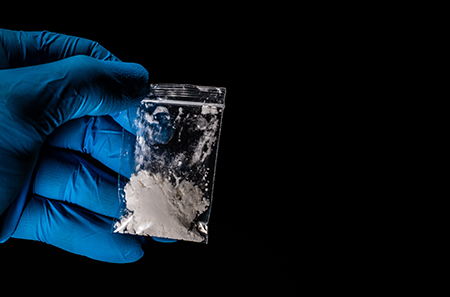Cornyn, Hassan Introduce Bill to Improve Fentanyl Detection at Southern Border
 On Friday, U.S. Senators John Cornyn (R-TX) and Maggie Hassan (D-NH) introduced their Contraband Awareness Technology Catches Harmful (CATCH) Fentanyl Act, which would help improve the process for inspecting cars, trucks, and cargo containers for fentanyl and other forms of contraband at the southern border by requiring U.S. Customs and Border Protection (CBP) to test new detection pilot projects while considering cost effectiveness, wait times, and existing infrastructure needs at land ports of entry (POEs):
On Friday, U.S. Senators John Cornyn (R-TX) and Maggie Hassan (D-NH) introduced their Contraband Awareness Technology Catches Harmful (CATCH) Fentanyl Act, which would help improve the process for inspecting cars, trucks, and cargo containers for fentanyl and other forms of contraband at the southern border by requiring U.S. Customs and Border Protection (CBP) to test new detection pilot projects while considering cost effectiveness, wait times, and existing infrastructure needs at land ports of entry (POEs):
“Last year, Customs and Border Protection seized enough fentanyl at the southern border to kill every American 16 times over, and we have no way of knowing how much more evaded law enforcement,” said Sen. Cornyn. “This legislation would help address glaring problems in the fentanyl detection system by requiring CBP to test new pieces of detection technology at land ports of entry so we can prevent this deadly drug from claiming more lives.”
“The fentanyl crisis has devastated families in New Hampshire and across the country and we must use every tool at our disposal to stop fentanyl from coming over our borders,” said Sen. Hassan. “This bipartisan bill will ensure that our law enforcement officials are using up-to-date, effective, and efficient technology – including artificial intelligence – when inspecting vehicles at our border. I will continue working with my colleagues across the aisle to strengthen resources at the border to detect and seize fentanyl and other illicit materials that are smuggled into the United States.”
Background:
The goal of using Non-Intrusive Inspection (NII) technology at POEs is to scan vehicles and cargo for anomalies to find contraband like fentanyl, but CBP has had several issues implementing the NII Systems Program. Despite ample funding in the U.S. Department of Homeland Security’s budget, NII is only able to scan two percent of passenger vehicles and less than 20% of cargo vehicles. There are many issues disrupting CBP’s detection efforts, including:
- Only one-third of the passenger vehicle NII scanning systems CBP plans to use at POEs can adequately scan the under-carriage of vehicles, where fentanyl is often located;
- Certain NII technology can’t physically fit at POEs located on bridges and surrounded by privately-owned land;
- Machines that scan for weapons of mass destruction (WMD) can’t be placed near cargo scanning machines because of the radiation they release, which causes WMD scanning machines to make false detections;
- And lines at POEs continue to be eight to 12 hours long during peak times at busier ports.
The CATCH Fentanyl Act would require CBP to analyze and test five new pieces of technology at land POEs to determine what types of technology could better scan for contraband, reduce wait times, and lower costs.








